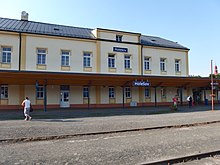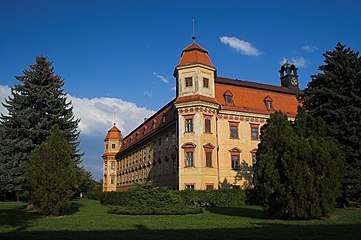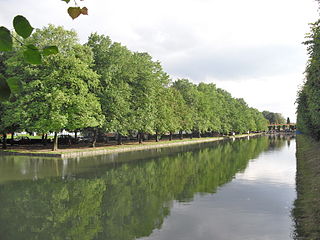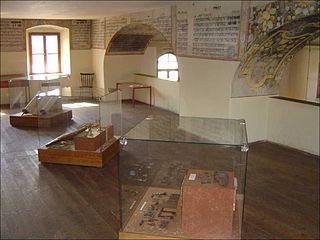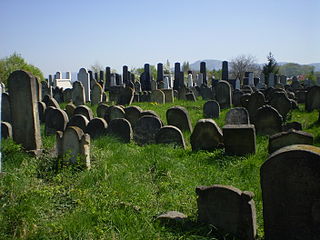Holešov
| Holešov | ||||
|---|---|---|---|---|
|
||||
| Basic data | ||||
| State : |
|
|||
| Region : | Zlínský kraj | |||
| District : | Kroměříž | |||
| Area : | 3396 ha | |||
| Geographic location : | 49 ° 20 ' N , 17 ° 35' E | |||
| Height: | 232 m nm | |||
| Residents : | 11,606 (Jan 1, 2019) | |||
| Postal code : | 769 01 | |||
| traffic | ||||
| Street: | Přerov - Zlín | |||
| Railway connection: | Kojetín – Český Těšín | |||
| structure | ||||
| Status: | city | |||
| Districts: | 6th | |||
| administration | ||||
| Mayor : | Rudolf Seifert (as of 2018) | |||
| Address: | Masarykova 628 769 17 Holešov |
|||
| Municipality number: | 588458 | |||
| Website : | www.holesov.cz | |||
Holešov ( German : Holleschau , older also Holeshof ) is a city in the Czech Republic . It is located 13 kilometers northwest of Zlín on the Rusava and belongs to the Okres Kroměříž .
geography
The city is located west of the Hostein Mountains in the Hanna at the transition to Moravian Wallachia . An industrial area is to be built on the former airfield south of Holešov.
Neighboring towns are Roštění , Bořenovice and Tučapy in the north, Dobrotice, Žopy and Přílepy in the east, Martinice and Zahnašovice in the south, Ludslavice in the south-west, Alexovice, Třebětice and Količín in the west and Rymice in the north-west.
history
The first written mention of the place Golessouici on the Bernsteinstrasse was made in a deed of ownership by the Olomouc bishop Heinrich Zdik . Holešov has been called a town since 1322. In the middle of the 14th century, the Olomouc bishopric enfeoffed Matouš von Sternberg auf Lukov with the Holešov manor. After Matouš's death, the Lukov estates and the Holešov fief in 1373, as an inheritance, were jointly owned by the two sons Zdeněk and Jan Ješek. These divided the property among themselves, whereby Jan Ješek received Holešov from Sternberg. The existence of Jews in Holešov has been documented since 1391. The expulsion of the Jews from the royal cities by Ladislaus Postumus in 1454 led to a large influx of Jews to Holešov, where a ghetto was created. There is evidence of a weaving guild in Holešov since 1558.
The Jewish community was one of the largest in Moravia and in 1560 a new synagogue was built after the old one burned down. As a result of disputes between the two branches of the family, the lords of Lukov and Holešov separated in 1446.
In the 16th century Holešov had developed into a center of the Bohemian Brethren , whose synods took place here in 1573 and 1577. In 1588, Charles the Elder from Zerotein became the owner of Holešov, and at the beginning of the 17th century the Boogers from Lobkowitz , who commissioned the Jesuits with the Counter-Reformation, followed. In 1616 Ladislav Popel von Lobkowicz appointed Jan Sarkander as a pastor. During the Thirty Years' War , Sarkander was accused of treason by Protestants and died in Olomouc prison. In 1623 Hungarian troops devastated the city and in 1643 it was the Swedes. In 1644 the Wallachian uprising caused devastation. A year later, a plague epidemic decimated the population. In 1650 Johann von Rottal acquired the rule. Franz Anton von Rottal founded a Trinitarian monastery on the occasion of the restoration of the Annenkirche .
Under the Counts of Rottal , the baroque palace with palace theater and palace chapel was built and the town flourished into a cultural center of Moravia. Her successors were the Counts of Würben . In 1782 the monastery was closed. After the Battle of Austerlitz , a military hospital was built in Holleschau in 1805.
After patrimonial was replaced , Holleschau became an independent town in 1848. In the same year the Jewish community reached its greatest strength with 1694 members. In 1854 Holleschau had 5,414 inhabitants. In the years 1774, 1850, 1899 and 1918 pogroms against Jews took place in the city. The New Synagogue was built in 1893 and was set on fire by the National Socialists in 1941.
In 1930 there were 6,738 people in Holleschau, including 62 Germans. After the German occupation, Holleschau became part of the Protectorate of Bohemia and Moravia from 1939 to 1945 . A resistance movement against the occupiers was organized in the city. The Jewish community consisting of 287 members was almost completely wiped out in the Holocaust , after the end of the Second World War only 14 Jews returned to Holešov. After the decision taken in 2004 to close the Holešov airfield and build a 360 hectare industrial area, the government added the project to the list of national strategy projects the following year. The airfield ceased operations in March 2009 and the first investor was announced after the infrastructure was completed in 2010.
Today the city is mainly home to the wood processing industry. Furniture production is traditional in Holešov. There is also the Sfinx chocolate factory, which is part of the Nestlé Group. The mechanical engineering company MOPAS specializes in the repair of Tatra trams. The Police Academy and the Middle Police School of the Czech Republic are located in the city. Holešov is the center of the Holešovsko microregion.
Local division
The town of Holešov consists of the districts Dobrotice ( Dobrotitz ), Holešov ( Holleschau ), Količín ( Kolitschin ), Tučapy ( Tutschap ) and Žopy ( Schop ) as well as the localities Plačkov ( Platzkow ) and Všetuly ( Wschetul ).
Attractions
- Holešov Castle, Baroque castle with a French park and canals, built between 1651 and 1717, only the 62 hectare park is open to the public
- City Museum and František Růžička Gallery
- Šach Synagogue with an exhibition on Jewish history in Moravia, built in 1560 in place of a previous building that had burned down
- Jewish cemetery with grave of the Jewish scholar Sabbatai ben Meir ha-Kohen , called Schach (1621–1662) and the funeral hall .
- Parish Church of the Assumption of Mary, built in the 14th century and redesigned from 1694 to 1708 according to plans by Filiberto Lucchese , in 1748 the black chapel was added as a burial place for Franz Anton von Rottal
- Church of St. Anna, baroque building from 1750
- Chapel of the Holy Cross in the cemetery, built in 1662 by Filiberto Lucchese
- Jewish quarter
- Plague column on the market
- American Park, with a burial site for 1000 wounded from the Battle of Austerlitz, laid out between 1900 and 1905, who died after 1805 in the Holleschau hospital
- Attractions
Town twinning
-
 Turčianske Teplice , Slovakia
Turčianske Teplice , Slovakia -
 Pszczyna , Poland
Pszczyna , Poland -
 Desinić , Croatia
Desinić , Croatia
sons and daughters of the town
- Franz Xaver Richter (1709–1789), composer
- Jan Alois Hanke (1751–1806), Moravian enlightener and humanist
- Raphael Georg Kiesewetter (1773–1850), musician
- Gerson Wolf (1823-1892), historian
- Arnold Eisler (1879–1947), Austrian politician
- Vladimír Groh (1895–1941), Czech classical philologist and historian.
- Jaroslav Böhm (1901–1962), archaeologist




